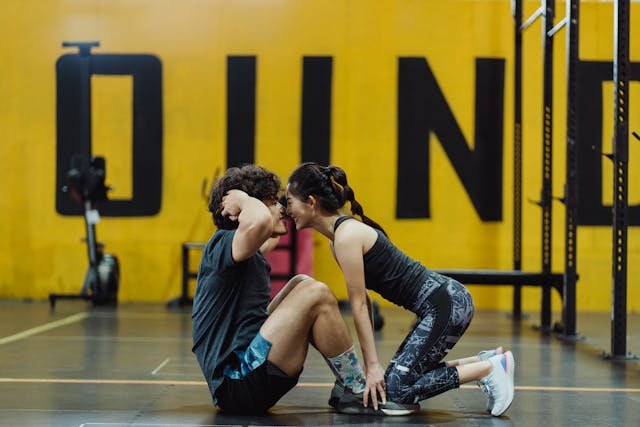Research findings point to patterns in human attraction and dating preferences, with fitness playing an important role. Unless you plan it be a sugar daddy or mom, attractiveness will definitely play a role in your dating life because that’s how human beings work.
The role of physical fitness in attraction and dating preferences
The data demonstrate that men often show a bias toward attractive faces in initial attention tasks, suggesting a preferential bias toward visually attractive partners. This bias is less pronounced or absent in women, indicating a possible difference in initial attraction factors between the sexes. The influence of physical characteristics is further supported by studies revealing that people who exercise regularly are perceived more positively on a range of physical and personal dimensions compared to those who do not. This includes traits such as physical attractiveness, vitality, sociability and overall impression.
The interaction between body image and exercise preference brings additional insight into the motivations behind physical activity. People with lower body image scores tend to gravitate toward aerobic exercise, possibly because of its association with fat loss and weight management. Conversely, those with higher body image scores often choose anaerobic exercise, which is typically associated with building muscle and building strength. The distinction highlights the role of self-concept in exercise habits and how these preferences align with goals related to body attractiveness and satisfaction.
Gender differences emerge in the context of body satisfaction and its effects on well-being and exercise behavior. Women report higher levels of body dissatisfaction and place more importance on their appearance in influencing their feelings of well-being. Despite these differences in perception, actual levels of physical activity do not differ greatly between men and women. For young men, there is a positive relationship between body satisfaction and physical activity engagement. this relationship is strengthened with an increased focus on the body. However, such an association does not emerge for women or older men, indicating unique factors at play in different demographics.
Muscle strength in women, related to self-perceived strength, is associated with a greater number of sexual partners. This association may reflect societal changes toward valuing physical strength and fitness as components of attractiveness in women. Preferences for type and intensity of exercise also differ between genders. College-aged individuals show a preference for self-guided exercise programs that combine moderate-intensity cardiovascular and strength training. Yet, College males have an increased preference for vigorous strength training compared to college females; highlighting gender-specific fitness interests.
Self-Esteem, Body Esteem and Social Perceptions
There is a direct relationship between self-esteem and body esteem. The recovery of one’s global self-esteem is often mirrored by an increase in body esteem. Body weight dissatisfaction contributes to lower self-esteem, highlighting the impact of body self-concept on overall psychological well-being. When individuals perceive that others view them as more attractive, they experience lower social anxiety and higher self-esteem. This suggests a substantial influence of external perceptions on internal states, where societal feedback affects personal distress and confidence levels.
These findings show the complexity of factors influencing dating life and attractiveness. Physical condition not only contributes to visual appeal, but also intersects with psychological dimensions such as self-esteem, body satisfaction, and perceived social values. The pursuit of fitness, therefore, becomes an avenue for enhancing both physical attractiveness and psychological well-being, making it a valuable consideration for individuals on the dating scene.
